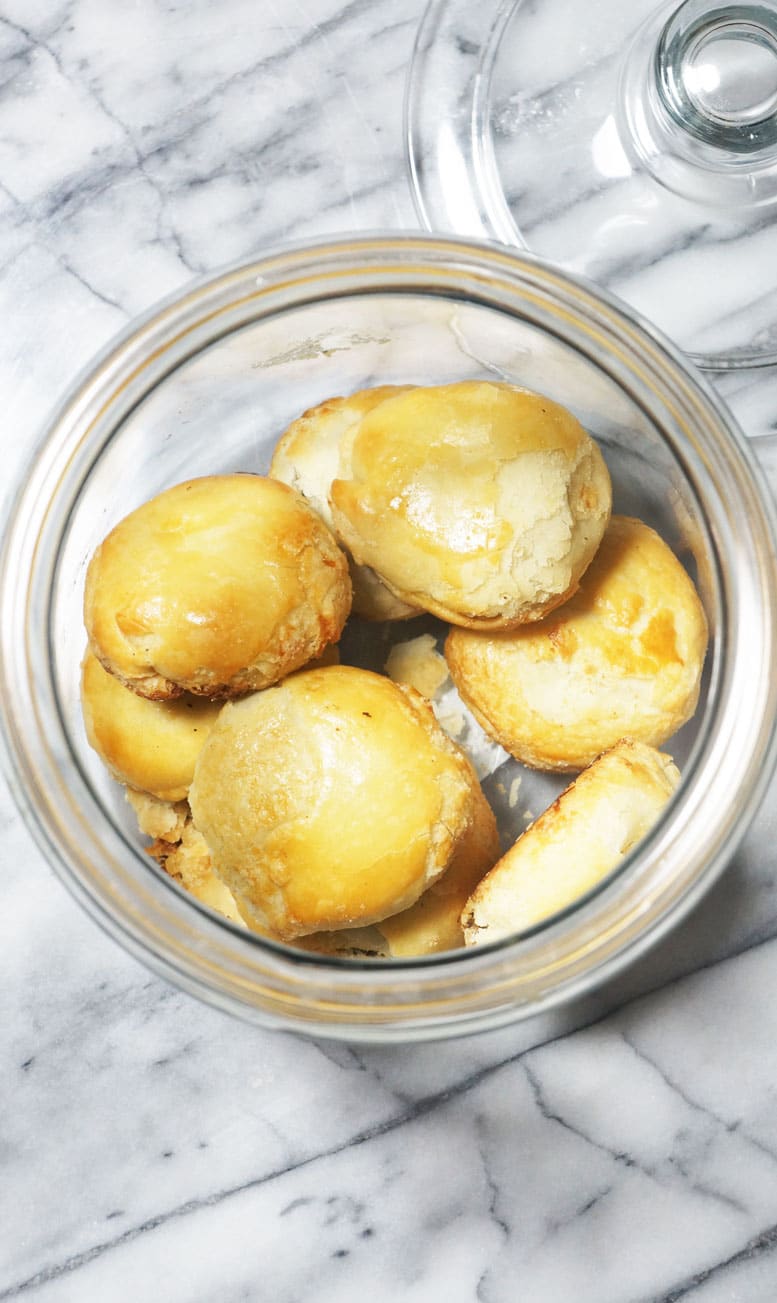Sweet and soft Buchi recipe with Mung bean filling. This is a sweet Filipino dessert sold on the side streets in the Philippines. This Filipino version of doughnut balls is coated with white sugar and filled with Mungo. It’s perfect with green tea and coffee- your Filipino snack is covered.

Hello, guys! Today, we are making a Sweet and Soft Buchi Recipe with Mung Beans Filling. This is called Chapssal in Korea, and it is one of their famous snacks. In the Philippines, however, particularly in the place I was in, this is called Buchi.
This recipe is similar to the Twisted Doughnut or Shakoy recipe I made a while back. You must mix all the ingredients, make a dough, and let it be proof. But, instead of forming the dough into a twister, you create the dough into balls and fill them with cooked and sweetened mung beans. You can cook the mung beans countertop, but since I am lazy, I slow-cooked Mung Beans/Mungo ahead of time, so it’s ready when I get my Buchi craving.

When I was in the Philippines, I always bought a bag of Buchi, sat on a curb, and ate them myself. Sugar was all over my mouth and my fingers; lick them while the other hand pulled the other Buchi out of the bag. I then pair it with a melon juice drink that is equally very sweet.
Ahh, those were good memories of my youth —– I was never even heard of the word “BILLS” before. Those were good times.
How do you Make Buchi from Scratch?
- Prepare the ingredients ahead of time so that you will not be scrambling around looking for them once you start kneading.
- Read the recipe instructions several times.
- Prepare the equipment needed. For me, I usually forget the cling wrap.
Buchi Ingredients
- cooked mungo
- all-purpose flour
- yeast
- sugar
- butter
- milk
- salt

Sweet and Soft Buchi Recipe with Mung Beans Filling
- Sweet and Soft Buchi Recipe with Mung Beans Filling.
Equipment
- deep fryer/frying pan
- electric mixer
- Mixing bowl
Ingredients
- 3 cups all purpose flour
- 2 tablespoons butter
- 1 packet active yeast 2 1/4 teaspoons
- 3 tablespoons white granulated sugar
- 1 cup milk room temperature ( I prefer evaporated milk)
- 1 large egg room temp
- 1/2 teaspoon salt
- canola oil for frying
- 2 tablespoon granulated sugar for coating
MUNG BEANS FILLING:
- 13.2 oz 375 g Mung Beans
- 6 cups water
- TAKE ABOUT 2 CUPS AND ADD 1/2 cups SUGAR
Instructions
COOK THE MUNG BEANS:
- In a slow cooker, slow-cooked Mung Beans are on high setting for 5 hours or until mung beans are very soft. Drain using a strainer and let cool.
- Take 2 cups of cooked mung beans. Freeze the leftovers for subsequent use.
- Drain mung beans and remove excess liquid. Place in a bowl and add 1/2 cup sugar, and mix. Keep on cooking until it dries up.
PREPARING THE DOUGH:
- Put the flour into the electric mixing bowl and mix using a wire whisk. Set aside.
- On low heat, melt the butter in a small saucepan. When butter is melted, remove it from the heat and add milk. Add egg, sugar, and salt and mix until dissolved and mix completely. Add the yeast. Let yeast sit for 5 minutes. You will see bubbles.
- Pour the mixture into the flour and mix at medium speed for seven minutes. Form into a round ball and cover with plastic wrap. Let the dough sit in a warm place for an hour until it doubles its size.
SHAPING THE BUCHI:
- Divide the dough into 16 pieces.
- Take a piece of dough form into a small ball. Flatten to one-fourth inch thick and add a tablespoon of mung beans in the middle. Seal the dough, ensuring the filling will not burst out while frying.
- Let the Buchi rest for another covered for 20 minutes before deep frying.
FRYING THE BUCHI:
- Heat a large amount of oil in a deep skillet setting it to 350 F, and lower the heat to medium, to get that crisp outside and soft inside Buchi. Fry until golden brown on each side.
- Put about 3-4 Buchi. Don't overcrowd the pan to maintain the oil temperature.
- Strain the cook Buchi and sprinkle with sugar. Do this while Buchi is still hot.
Notes
- Ensure that the dough is not thick so that it will cook through when frying.
- When melting the butter, make sure that it's not too hot when mixed with the milk. You don't have to cook the egg when mixed together.













Leave a Reply